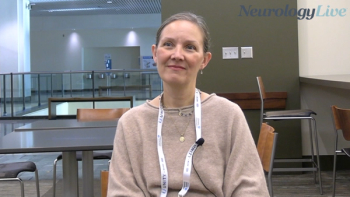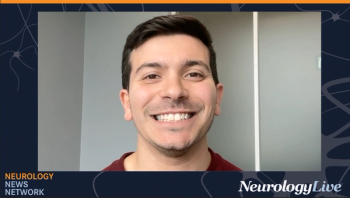
Responsive Neurostimulation System Dramatically Reduces Seizures in Refractory Epilepsy
NeuroPace’s FDA-approved neurostimulation device helped 35% of patients with epilepsy achieve ≥90% reduction in seizure frequency, with 18% of patients reporting seizure freedom at last follow-up.
Martha Morrell, MD
Data collected from 2 seminal studies of NeuroPace’s responsive neurostimulation (RNS) system demonstrate the system's ability to dramatically reduce seizures and improve quality of life for people living with refractory epilepsy.1
The first study, published in Epilepsia,2 included 150 patients treated for at least 1 year with the RNS system and included data on serious adverse events (AEs) and the median percent change in disabling seizure frequency from baseline at years 1, 2, and 3 of treatment and at most recent follow-up. The median reduction in seizures was 67% (interquartile range [IQR], 33—99; n = 149) at 1 year, 75% (IQR, 50–94; n = 93) at 2 years, 82% (IQR, 50–96; n = 38) at ≥3 years, and 74% (IQR, 50–96; n = 150) at last follow-up (mean, 2.3 years).2
Led by Babak Razavi, MD, PhD, clinical assistant professor at Stanford University, and Vikram R. Rao, MD, PhD, neurologist and epilepsy specialist at the University of California, San Francisco, the data show that 35% of patients had a ≥90% reduction in seizure frequency, with 18% of patients reporting being clinically seizure-free at last follow-up.
Age, age at epilepsy onset, duration of epilepsy, seizure onset in mesial temporal or neocortical foci, magnetic resonance imaging (MRI) findings, prior intracranial monitoring, prior epilepsy surgery, and prior vagus nerve stimulation treatment did not factor into the seizure frequency reductions.
Additionally, the infection rate per procedure was 2.9% (6 of 150 patients); 5 patients had an implant site infection and 1 had osteomyelitis. Lead revisions were required in 2.7% (4 of 150) of patients, and 2% (3 of 150) had a subdural hemorrhage, none of which had long-lasting neurological consequences.
“These real-world outcomes are even better than those reported in the clinical trials supporting FDA approval and underscore the unique advantages of the RNS System for people living with refractory epilepsy,” Rao said in a statement.1 “In addition to compelling therapeutic benefits, the RNS System is the only epilepsy treatment that empowers clinicians with long-term intracranial EEG data, providing them with actionable insights that can be used to develop a personalized treatment plan for each patient.”
The second trial was a seminal 9-year, multi-center, long-term treatment study published in Neurology.3 It is the largest prospective neuromodulation trial in the field of epilepsy that included 230 patients across 34 epilepsy centers with nearly 1900 patient-implant years of follow-up.
READ MORE:
In that study, adults treated with the RNS system within 2-year feasibility or randomized controlled trials entered into a long-term prospective open label trial (LTT) to assess safety, efficacy, and quality of life (QoL) over an additional 7 years. At 9 years, the median percent reduction in seizure frequency was 75% (P <.0001; Wilcoxon Signed Rank), responder rate was 73%, and 35% of patients had a ≥90% reduction in seizure frequency.
Furthermore, 18.4% (47 of 256) of patients experienced ≥1 year of seizure freedom with 62% (29 of 47) seizure-free at last follow-up and an average seizure-free period of 3.2 years (range, 1.04—9.6 years). The research, conducted by principal investigator Martha Morrell, MD, chief medical officer at NeuroPace, and colleagues, showed that enduring improvements were seen in overall QoL and cognitive function (P <.05).
In addition to the high rate of reduction in seizure frequency, there were no serious adverse events (AEs) related to the stimulation. Additionally, the rate of sudden unexplained death in epilepsy (SUDEP) was significantly lower than predefined comparators (P <.05; one-tailed Chi Square).
“The robust clinical evidence affirms the long-term benefits of the RNS system and clearly establishes it as part of the standard of care in the treatment of refractory epilepsy,” Morrell said in a statement.1 “It’s exciting to realize that we are just at the beginning of harnessing the power of the data captured by the RNS system. With growing clinical experience, as we saw in the real-world study, and with advanced artificial intelligence research applied to our dataset of 4.5 million ECoG records, we can expect continued improvement in the efficacy of the RNS system.”
The RNS system is designed to prevent seizures using a neurostimulator with leads placed at the seizure foci. A remote monitor for uploading data and an RNS tablet help with patient data management. In March,
The inclusion of MRI labeling for the RNS system added an additional treatment option to the antiseizure armamentarium for those with refractory epilepsy who were previously restricted by the need for necessary imaging.
REFERENCES
1. New publication data show NeuroPace’s RNS System provides patients with unprecedented seizure reduction and improved quality of life [news release]. Mountain View, CA. NeuroPace. Published July 27, 2020. Accessed July 30, 2020. businesswire.com/news/home/20200727005116/en/New-Published-Data-Show-NeuroPace’s-RNS®-System
2. Razavi B, Rao VR, Lin C, et al. Real-world experience with direct brain-responsive neurostimulation for focal onset seizures. Epilepsia. Published online July 13, 2020. doi: 10.1111/epi.16593
3. Nair DR, Laxer KD, Weber PB, et al. Nine-year prospective efficacy and safety of brain-responsive neurostimulation for focal epilepsy. Neurology. Published online July 20, 2020. doi: 10.1212/WNL.0000000000010154
4. NeuroPace RNS system receives FDA approval for MRI labeling, allowing thousands more patients to benefit from personalized, data-driven epilepsy treatment [news release]. Mountain View, CA. NeuroPace. Published March 9, 2020. Accessed July 30, 2020. neuropace.com/neuropace-rns-system-fda-approval-mri-labeling.
Newsletter
Keep your finger on the pulse of neurology—subscribe to NeurologyLive for expert interviews, new data, and breakthrough treatment updates.



































